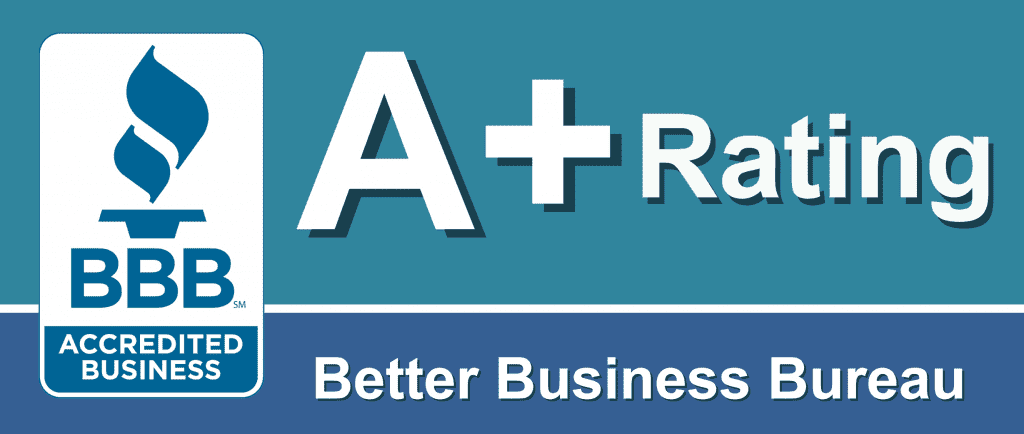September 2019 mortgage rates remain near multi-year lows as we move closer to fall. Conforming, FHA, and Jumbo fixed mortgage rates remain very attractive for both homebuyers and homeowners who are looking to refinance their current mortgage.
My team and I have been offering low rates, fast closings, and exceptional service for over 15 years. That’s why we have an A+ rating with the Better Business Bureau and a AAA rating with the Business Consumers Alliance. Contact me directly for a no-cost/no-obligation quote and see what makes us different.
Week Two – Rates Near Lows
Conforming, FHA, and Jumbo fixed mortgage rates are near recent lows as we move into the second week of September. However, concerns over a possible trade deal and a recent bond market selloff are putting pressure on mortgage rates to move higher. If you are looking to refinance your current mortgage or if you are in the process of buying a new home it’s a good idea to lock in terms as soon as you can to avoid any possible increases.

Week Three – Stability?
Conforming, FHA and Jumbo fixed September 2019 mortgage rates may see some improvement this week as the market adjusts to the risks associated with potential war in the middle-east. Over the weekend an oil refinery in Saudi Arabia was attached and today we’re seeing bond markets rally on that news. However, these gains might be short-lived if there is a quick resolution to the conflict (more on this below).
This week is the Fed meeting and the release their decision at 12:00 pm (PST). Many believe the Fed will lower but recently some have reversed that assumption due to the stronger than expected economic data that has come out. The Fed does not directly control mortgage rates however their policy stance and views on the economy do have an influence over the direction of Mortgage-Backed Securities and more specifically consumer mortgage rates.
Fourth Week – Things Have Changed
As we move towards the end of September 2019 Conforming, FHA and Jumbo fixed mortgage rates remain at lower levels after last week’s Fed meeting. Those looking to refinance their current mortgage or purchase a new home are seeing mortgage rates significantly lower mortgage rates compared to 12 months ago.
Back in September 2018 – October 2018 mortgage rates moved significantly higher as it appeared the economy was improving faster than anticipated and inflation was picking up. Mortgage rates moved above 5.00% (30 year fixed mortgage rates) and both refinance and purchase loan applications came to a standstill. In fact, some lenders were quoting 5.50% 30 year fixed mortgage rates!
That was the peak as mortgage rates started to improve and by 2019 mortgage rates moved dramatically lower.
Impeachment and Mortgage rates
With the announcement that the House of Representatives will begin an Impeachment inquiry the natural question to ask (for homeowners and homebuyers) is how will this impact mortgage rates? The simple answer is no one knows for sure. We’ll have to see how the process plays out. However, what this process might do is delay a possible trade deal with China (although it was already looking like there would not be a trade deal any time soon).
Expectations For The Fed Meeting
Let’s just get this out of the way: it is unlikely that that mortgage rates will improve if the Fed lowers on Wednesday. Recent data suggest the economy is doing “ok” and current bond market levels reflect the likelihood that the Fed will lower later this week.
Is there a chance mortgage rates will improve if the Fed lowers?
Absolutely; nothing is for certain but it’s important to keep things in perspective when trying to understand the direction of mortgage rates and how that influences your decision making.
From October 2018 – August 2019 mortgage rates moved significantly lower without much disruption. Bond yields and mortgage rates don’t move lower forever nor do they usually move lower for that long of a period. The bond market sent a clear signal last week that we reached a bottom. Unless economic data gets worse during the last three months of 2019, the best we can hope for during this time is bond market and mortgage rate stability.
California homeowners and homebuyers looking for a low-rate mortgage are still in luck. Mortgage rates in California may not be at their recent lows but they are near them and significantly better than they were last October.
Important Economic Data This Week
Here we cover the daily economic events that might impact mortgage rates. After the report comes out we’ll update the post with that information and comment on if there is a potential impact on mortgage rates.
Week 1:
- ISM Manufacturing PMI: Market expectations were for a reading of 51.2 (which was last month’s reading). The reading came in well below market expectations at 49.1 (the lowest reading in years). Post report the bond market rallied pushing the 10y yield to 1.45%. Mortgage-Backed Securities also improved however not by much. If the 10y yield holds at this level Mortgage-Backed Securities should improve more over the next 24-72 hours (not a guarantee though).
- Construction Spending: The reading came in at a 0.1% increase and the market was expecting a 0.3% increase after last month’s 1.3% decline. Construction spending remains weak.
- ISM Manufacturing Prices Paid: Market expectations were for a 45.8 reading and the report came in stronger than that. The 46.0 reading was not only higher than market expectations but higher than last month’s reading as well.
- Mortgage Market Index: The latest Mortgage Market Index shows a decline in both Refinance and Purchase applications. Despite multi-year low mortgage rates in California and across the country lenders are seeing loan volume shrink. However, it is the end of summer; and as we move into September there is a decent chance that loan volume increases. The Mortgage Market Index came in at 558.5 after last week’s reading of 575.2. The Refinance component came in at 2367.2. Last week it came in at 2545.6. The Purchase component came in at 242.6 which is lower than last week’s reading of 234.1. There was no bond market reaction to the report.
- ISM-New York Index: Last month’s reading came in at 878.8 and the reading came in at 879.0. There was no impact on mortgage rates from the report.
- ADP Employment: Expectations were for a reading of 149,000 jobs created and the actual number came in at 195,000 jobs created. Post report the 10y yield moved from 1.50% to 1.52%.
- Unemployment Claims: Expectations were for 215,000 claims and the report came in at 217,000 claims.
- ISM Non-Manufacturing PMI: The market is expecting a reading of 54.0 after last month’s reading of 53.7. Post-report bonds sold off significantly and pushed mortgage rates higher.
- Employment Report: Expectations were for 158,000 jobs created and the report showed 130,000 jobs created which is below last month’s reading of 164,000 jobs created. Overall job growth is lower than it has been in previous years. Average earnings showed an increase of 0.4% (expectations were for a 0.3% increase) and the unemployment rate remained unchanged at 3.70%.
Week 2:
- Employment Trends: Last month’s reading came in at 111.0 and the most current reading came in at 110.62. The report had no impact on the bond market and no impact on mortgage rates.
- Consumer Credit (July): Last month’s reading came in at 14.60 and the market expectations for this month are for a reading of 16.10. We’re not expecting a significant impact on current mortgage rates no matter what is reported however if consumer credit declined for the second month in a row it’s something we should start paying attention to. Credit is the main driver for consumers; declining credit would be a negative for consumer spending.
- Mortgage Market Index: Mortgage applications increased in the latest MBA survey of mortgage professionals. The Mortgage Market Index came in at 569.8 after last week’s 558.5 reading. The Refinance Index came in at 2377.5 (last week it was 2367.2) and the Purchase Index came in at 253.5 and last week it was 2367.2. According to the report; the average 30 year fixed rate was 3.82% (points/fees being charged directly to the borrower). It’s safe to assume the average rate will be higher in the next survey unless something dramatic happens before the weekend.
- Core Producer Prices: Expectations were for a reading of 2.2% (year/year) after last month’s reading of 2.1%. However, the reading came in higher than expected; 2.3%. Producer Prices for August increased by 0.1% (more than expected) and monthly Core Producer Prices also came in higher than expected (0.3% increase). Post report bond yields moved higher and Mortgage-Backed Securities sold off.
- Wholesale Inventories: Expectations were for an increase of 0.2% however the reading came in at 0.3%.
- Wholesale Sales: Today’s reading came in line with expectations; a 0.2% increase.
- Core CPI: Expectations were for a 2.3% annual increase and a 0.1% month-over-month increase. The annual rate came in higher than expected (2.4%) and the month-over-month increase was in line with expectations. Post report Treasuries and Mortgage-Backed Securities sold off due to the increased inflation.
- Weekly Unemployment Claims: Last week the report showed 217,000 people filled for unemployment claims and this week the number came in at 204,000.
- Retail Sales Report: Retail Sales for August came in at a 0.4% increase after last month’s 0.7% increase. Expectations were for a 0.2% increase so the report came in better than expectations. The consumer has been the bright spot for the economy.
- Export and Import Prices: The Export and Import Prices report came in below expectations. Export prices showed a decline of 0.6% and import prices show a decline of 0.5%. Expectations for Export prices were a decline of 0.2% (after last month’s gain of o.2%) and expectations for Import Prices were for a decline of 0.4% after last month’s reading of a 0.2% gain.
- 1y and 5y Inflation Expectations: The 1y inflation report came in at 2.8% and the 5y inflation report came in at 2.3%.
Week 3:
- New York Fed Manufacturing Report: Expectations were for a reading of 4.00 after last months 4.80% reading however the final reading for this month came in at 2.00.
- Industrial Production: Last month the Industrial Production report came in at -0.2% and expectations for this month were for a reading of +0.2%. The final reading came in above that; +0.6%.
- NAHB Housing Index: The reading came in at 68 and market expectations were for a reading of 66. Last month’s reading was 66.
- Mortgage Market Index: The reading for the Mortgage Market Index came in slightly lower than last week. This morning’s reading was for 569.5 and last week the reading came in at 569.8. The Purchase component came in at 269.7 (last week it was 253.5) and the Refinance component came in at 2274.1 (last week it came in at 2377.5). The average 30 year fixed mortgage rate increased from 3.82% to 4.01%.
- Housing Starts: Housing starts increased in the last survey to 1,364,000 (annual rate) after last month’s reading of 1,191,000 units (annual rate). Expectations were for a reading of 1,250,000 units (annual rate).
- Building Permits: Building Permits also increased. This morning’s reading came in at 1,419,000 (annual rate) and last month the reading was at 1,300,000 (annual rate).
- Philly Fed Index: The Philly Fed Index came in at 12.0 (expectations were for a reading of 11.0). Last month the reading came in at 16.8 and the previous month the reading came in at 21.8.
- Jobless Claims: The weekly report showed 208,000 unemployment claims after last week’s reading of 208,000.
- Existing Home Sales: Market expectations are for a reading of 5,370,000 home sales (annual rate) after last month’s reading of 5,420,000 home sales (annual rate).
Week 4:
- IHS Markit PMI Report: Expectations for the PMI report (Manufacturing) were for 50.3 and the report came in at 51.o. The August report came in at 50.3. As for the Service Sector; expectations were for 51.3 and the reading came in at 50.9 after last month’s reading of 50.7. The composite reading came in at 50.9 (expectations were for a reading of 51.3). Post report the bond market rallied and mortgage rates should start off the week at slightly better levels than last week.
- Monthly Home Prices: Last month’s reading was 4.8% year/year growth. This morning’s report showed 5.00% year/year growth.
- CaseShiller: The year-over-year growth of the 20 largest markets was 2.00% after the 2.1% growth reported last month.
- Consumer Confidence Report: Market expectations are for a reading of 133.5 after last month’s reading of 135.1.
- Mortgage Market Index: There was a big drop in applications in the most recent MBA survey. The overall index came in at 512.2 (after last week’s reading of 569.5). The Purchase component came in at 261.4 after last week’s reading of 269.7. The refinance component came in at 1928.0 after last week’s 2274.1 reading.
- New Home Sales: The market is expecting an annual reading of 660,000 units after last month’s reading of 635,000 units. The final reading came in at 713,000 units (annual rate).
- Q2 Final GDP: The expectations for the reading were 2.00% and that is exactly what was reported.
- Weekly Jobless Claims: Last week’s report came in at 208,000 claims and this week it came in at 213,000 claims.
- Core PCE: The market was expecting a 1.8% increase and that is what the report delivered. Last month the important inflation report showed an increase of 1.6%. Post report Mortgage-Backed Securities improved slightly.
- Durable Goods: Last month the Durable Goods report showed a 2.0% increase and the market was expecting a -1.0% decrease however the report came in at an increase of 0.2%.
- Personal Income: Personal Income came in at a 0.4% increase after last month’s 0.1% increase.
- Consumer Inflation Expectations: Consumer Inflation Expectations for 1y came in at 2.8% and for the 5y report it came in at 2.4%. Last month the 1yr report came in at 2.8% and the 5y report came in at 2.3%.
- Consumer Sentiment: The market was expecting a reading of 92.0 and the reading came in at 92.0
Mortgage-Backed Securities & Treasury Snapshot:
September 3rd – September 13th:
Mortgage-Backed Security FNMA 3.0 started the month around the 101.98 level and FNMA 3.5 started at the 102.80 level. The 10y Treasury yield started at the 1.48% level.
Mortgage-Backed Security FNMA 3.0 finished off the two week period around 101.13, and the FNMA 3.5 at 102.38. The 10y Treasury yield started the day at the 1.79% level. After the open on the 13th, the selling continued pushing the 10y yield to over 1.86% just before the weekend.
September 16th – September 30th:
Mortgage-Backed Security FNMA 3.0 started on the 16th at 100.88, and the FNMA 3.5 coupon started the day at 102.25. The 10y Treasury yield started on the 16th at the 1.84% level. While it’s great to see bonds bounce back it’s not the bounce that usually leads to reversal. Today’s rally is based on the attack on the Saudi Arabia oil refineries and typically bond gains reverse course once the geopolitical risk is resolved or the market believes it won’t last much longer.
Mortgage-Backed Security FNMA 3.0 finished off the month at 101.35, and the FNMA 3.5 coupon at 102.46. The 10y Treasury yield finished the month of September at the 1.70% level.
Tips On How To Close Your Refinance Fast
With mortgage rates near multi-year lows, many homeowners are moving forward with a refinance. Some are refinancing to lower their interest rate, some are looking to move from a 30 year fixed term to a 20 or 15 year fixed term and others are looking to obtain cash out to remodel the home and/or pay off debt.
I would guess each homeowner that is looking to refinance would like to see the process take as little as time as possible. With us, it can take as little as two-three weeks but the usual time frame is four weeks from when we have everything in and submitted to underwriting.
Here are some tips to help ensure you have a speedy refinance:
- Turn in all the requested documentation quickly; ideally within 24-48 hours of the request. And if the Loan Officer has questions make sure you respond in a timely manner with a complete answer.
- Don’t turn in the documentation that is not requested. Make sure you turn in exactly what the Loan Officer is asking for. And it’s important not to assume you can send something else in as a replacement.
- If you need an appraisal schedule that ASAP. Usually, an appraiser will complete the inspection in 20-30 minutes and will come in the morning, afternoon, or evening (as long as there is sunlight).
Following these guidelines could save you a week or more in processing times. If you have any questions please don’t hesitate to ask.
















